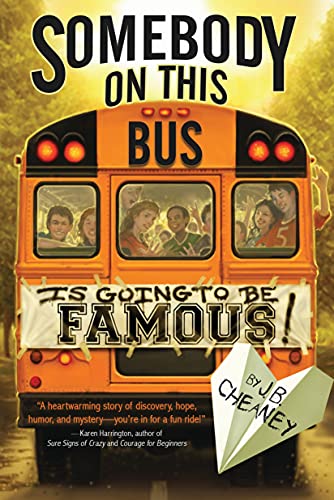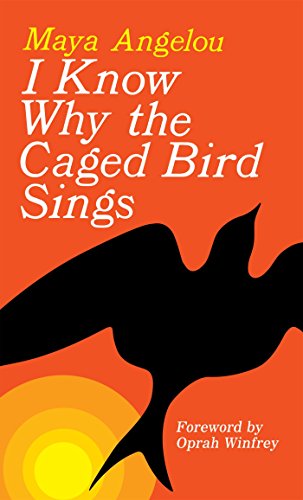We are BACK on the road and visiting Wonderland Bookshop in Greensboro, NC. Owned by two sisters, they specialize in books for children and young adults. Come along and discover this wonderful shop!
Month: January 2023
The Boy with the Butterfly Mind by Victoria Williamson (J Fiction)
The Boy with the Butterfly Mind
Victoria Williamson (J Fiction)
Elin has never been in trouble for anything in her whole life. She is smart, respectful, and helpful. A perfect princess determined to get her divorced parents back together…even though her mother is in a relationship and her father is married. Elin has everything under control, but she doesn’t have any friends. After all, it’s lonely being so perfect all the time. Then there’s Jamie who seems to be a magnet for trouble. He has ADHD and is easily distracted, forgetful, and messy. His parents are also divorced and Jamie blames himself…as he often does for most things that go horribly wrong. It would be nice if he had a friend to talk to, but it’s lonely being bad all the time. When these two very lonely and different worlds collide, order and chaos not only meet, but they end up living together in a house that seems to grow smaller by the minute.
The Boy with the Butterfly Mind is told from the alternating viewpoints of Elin and Jamie—both eleven. Although you understand the internal and emotional struggles of both characters, it is far easier to be sympathetic towards Jamie. Although he is completely aware of his challenges and limitations, he still absorbs an unfair amount of guilt and blame while managing to maintain a trusting and forgiving attitude. His journey is a rollercoaster ride of emotions and just when we think his life is getting easier, the rug is mercilessly pulled out from him. With so much against him, we can’t help but cheer on this perpetual underdog.
Williamson is a primary school teacher with a Master’s Degree in special needs education. She’s worked with children requiring additional support needs and this real-world experience is evident in her writing. We see it as Jamie details his struggles and feelings and especially when he describes his interactions with his mother who is completely overwhelmed and emotionally drowning. These occurrences are raw and ugly and uncomfortably accurate. When Jamie hurts, we hurt, which makes this book all the more thought provoking and poignant.
By focusing on Jamie, I don’t mean to downplay Elin and her feelings. She, too, is struggling with her own demons as she feels that the only way to win her father back is to maintain a level of perfection that is both unrealistic and impossible. She puts undue pressure on herself and the introduction of an imperfect and unwanted addition to her family just adds to her burden. It’s a lose-lose situation for everyone and we can’t help but wince as we witness the walls around these people come tumbling down. However, the measures that Elin takes in her own personal “war” against these unwanted intruders are both cruel and dangerous and under these circumstances it is difficult to extend her any mercy or grace although she is keenly aware and witnesses the consequences of her actions.
Using data from 2016-2019, the Centers for Disease Control and Prevention estimated that 6 million children—between the ages of 3 to 17—were diagnosed with ADHD, which is why books like this one are so important and valuable. To show the bullying and isolation that children with this diagnosis experience is just the first of many steps that need to be taken to promote understanding, acceptance, and inclusion.
There’s a quote about friendship that I’ve used before in a review that’s from an anonymous source. It’s one of my favorites: A friend is one who overlooks your broken fence and admires the flowers in your garden. Although Jamie felt broken and just wanted to be “normal”, he was lucky enough to find such a friend who made him realize that you don’t have to be perfect in order to be a perfect friend. I think the world would be a much better place with more people like that in it and I’m glad that Elin eventually realized this, too.
Rating: 5/5
* Book cover image attributed to: www.abebooks.com
We’re now posting videos of some of our book reviews! Follow us on Facebook at www.facebook.com/thedustyjacket or on Instagram @tdjreviews and join in on the fun!
Bookin’ It: Pauper’s Books & More
We’re heading to Clayton, NC to visit an independent bookseller that’s been in business for 15 years. Join us and support your local bookstore and small business!
5 Books About Survival
Whether they’re battling the outdoors, their current social situation, or just life in general, these five characters all share one thing in common: they’re fighting to survive.
Somebody on This Bus is Going to Be Famous! by J.B. Cheaney (J Mystery)
Somebody on This Bus is Going to Be Famous!
J.B. Cheaney (J Mystery)
Somebody knows more than he or she should. That’s the link they’re missing, but they may have a way to find it.
The elementary school bus that serves Hidden Acres Subdivision has a motley assortment of students: the celebrity, bully, talker, innovator, the brain, adapter, jock, pleaser, and the new kid. Today was the start of the school year, but their driver took an expected turn onto Farm Road 152 and pulled alongside an empty bench. No one was waiting and no one boarded, yet day after day the bus took this same route to the same empty bench. And then things began appearing at the stop. Things that held a specific connection to certain kids on the bus. As questions about the mysterious stop lead to events that happened many years ago, unlikely alliances form to reveal answers that will surprise everyone…and make somebody on the bus famous.
Not since Ellen Raskin’s The Westing Game have I taken so many notes on a book (ten journal pages in case you’re wondering). With nine central characters and story lines to keep track of, not including the bus driver, it’s a lot to keep straight and remember. Luckily, Cheaney does an excellent job of giving each character their turn in the spotlight as we are introduced to their homelife and get to understand a little about what makes them tick. What the author eventually shows us is that you can’t always judge a book by its cover as these multi-dimensional characters are dealing with some very complex and complicated family issues—most of which seem to stem from absentee, apathetic, or annoying fathers. This book did have a surprising amount of daddy issues, although a lot of the moms don’t come across much better.
This book has a recommended reading age of 10 to 13 years, which is appropriate for the content. There are multiple innuendos regarding profanity; however, one character’s grandparent is suffering from dementia so some statements made are mildly lewd and inappropriate. While the subject matter is sobering, Cheaney handles it compassionately and realistically. And although there are a lot of moving parts to this story, it is an exhilarating ride that really picks up speed during the last fifty pages where all the dots begin to connect. Add to that a harrowing bus accident (which is where our story began) and you have non-stop action and suspense. The only complaint I had is at the very end of the book, the author mentions a bonus chapter and provides two different URLs to visit in order to see what happened to our gang of nine. When I accessed the links (I like closure), neither worked so let this be a warning to all authors: forego the marketing gimmicks and just put whatever you have to say in print. Technology is a fickle beast.
American television host and author Fred Rogers once said, “Fame is a four-letter word; and like tape or zoom or face or pain or life or love, what ultimately matters is what we do with it.” And although I won’t ever know what came next for the celebrity, bully, talker, innovator, the brain, adapter, jock, pleaser, and the new kid, I’d like to think that they each realized their own value and worth because to me that’s much better than being famous.
Rating: 5/5
* Book cover image attributed to: www.abebooks.com
We’re now posting videos of some of our book reviews! Follow us on Facebook at www.facebook.com/thedustyjacket or on Instagram @tdjreviews and join in on the fun!
Open Up and Read Some Banned Books: Pt. 2
We’re reviewing Olive’s Ocean, Speak, and I Know Why the Caged Bird Sings PLUS answering some banned book questions.
Island of the Blue Dolphins by Scott O’Dell (J Fiction)
Island of the Blue Dolphins
Scott O’Dell (J Fiction)
Twelve-year-old Karana loved her village of Ghalas-at where everyone had their place and knew their role. Life was good until the day the Aleut ship—with its two red sails—arrived at the Island of the Blue Dolphins to hunt otters. What should have been an amicable partnership turned into betrayal and bloodshed and would mark the beginning of a new life for Karana and her people. With most of their men dead, the villagers spot another ship, this one bearing white sails and wanting to take them all to somewhere safe. But fate intervened and Karana found herself abandoned and alone on her beloved island. As she awaits the ship’s return, Karana learns how to survive while avoiding danger both on and off the island. As the years pass, she continues to scour the water looking for the sails: white will reunite her with her family while red will surely bring her death.
Based on the true story of a Nicoleño woman who survived alone on San Nicolas Island for 18 years, Island of the Blue Dolphins is a story of courage, survival, and perseverance. With only herself to rely on, Karana quickly disregards the laws of her village which forbade women to make weapons. She also finds a safe place to sleep, stocks food, constructs a home, and secures her property. Only when she becomes injured does she truly understand the precarious position that she is in: if she is incapacitated, no one else will care for her and she will most certainly die. This new realization causes an awakening in Karana and we see her mature almost overnight.
It would have been easy and appropriate for O’Dell to allow Karana time to grieve and buckle under the weight of her predicament and tremendous responsibilities. Instead, he gives us a character who rises above her circumstances to forge a new life for herself while finding courage, compassion, and companionship along the way.
Although O’Dell gave us Karana in 1960, I hope that a new generation discovers her and finds a heroine who doesn’t need a wand or cape or superhuman abilities to prove her worth or to define who she is. Karana shows us that often times a great heroine is strong and brave and kind not because of who she is, but because life requires it of her and she fearlessly chooses to answer the call.
Rating: 5/5
* Book cover image attributed to: www.abebooks.com
We’re now posting videos of some of our book reviews! Follow us on Facebook at www.facebook.com/thedustyjacket or on Instagram @tdjreviews and join in on the fun!
Open Up & Read Some Banned Books – Part 1
5 Great Historical Fictions for Kids
We’re going to Japan and to the moon, looking at the Civil War, union protests, and experiencing the beautiful friendship between a spirited girl and a silent boy. Come along as I review 5 Great Historical Fictions for Kids.
I Know Why the Caged Bird Sings by Maya Angelou (Adult Autobiography)
I Know Why the Caged Bird Sings
Maya Angelou (Adult Autobiography)
If growing up is painful for the Southern Black girl, being aware of her displacement is the rust on the razor that threatens the throat. It is an unnecessary insult.
Before she became Maya Angelou, she was Marguerite Johnson. When she was three, Marguerite—along with her four-year-old brother, Bailey—was shipped from Long Beach, California to Stamps, Arkansas bearing little more than an identification tag with instructions on her wrist. The pair was sent to live with their paternal grandmother and crippled uncle. It was here where young Marguerite would watch the poor Blacks picking cotton in the fields, fall in love with Shakespeare, experience prejudice and hate from people far poorer and less educated than herself, and learn her multiplication tables. In the years following, she would be shuffled back and forth between her mother, father, and grandmother while surviving rape at the age of eight, celebrating her first library card, getting her first job, and experiencing motherhood.
Angelou’s autobiography, which details her life from age 3 to 17, spent two years on the New York Times paperback bestseller list, was nominated for a National Book Award, received the Literarian Award in 2013, and yet remains one of the most banned and/or challenged books in America for its violence, racism, sexuality, childhood rape, and teen pregnancy.
Banning Angelou’s work—set in the 1930s and 40s and told from the lens of a young Black girl—because of its violence and racism is akin to banning a book on war because it’s too bloody. To measure a book set in the past using today’s racial, moral, and ethical standards is unreasonable, unfair, and unrealistic. It’s a false equivalent and no historical work, person, or idea could ever pass such a litmus test. Yes, Angelou’s book contains everything that it was banned for, but chastising these honest and true observations, experiences, and thoughts through removal doesn’t make our schools or society any better for it. How can it?
I Know Why the Caged Bird Sings is gritty, sobering, shocking, and compelling while being uplifting, witty, honest, and hopeful. Angelou shares memories of her first Valentine, her 8th grade graduation, the stability a new stepfather brought to her family, her multiple scholarships to the California Labor School, the summer when she and her father took an unforgettable trip into Mexico, the month she lived in a junkyard, and being the first Black to work on the San Francisco streetcar system. At every turn, Angelou seemed to live her mother’s advice: Life is going to give you just what you put into it. And Angelou gave it her all.
Angelou’s title of her autobiography is a reference to Paul Laurence Dunbar’s poem “Sympathy”, which is filled with empathy for a bird longing and crying out for freedom. After reading Angelou’s early years, I felt that the caged bird sings because that was what it was born to do. Angelou is that bird and despite the limitations and bars placed around her, she refused to be a prisoner or a victim. She never stopped at finding a way to make the impossible possible and whenever she felt helpless or weakened, she rose above it all and sang because that was what she was born to do. Through her books and poetry, generations will continue to enjoy Maya Angelou’s song as long as we, as a society, are brave enough to keep the cage door open for all to hear.
Rating: 5/5
* Book cover image attributed to: www.abebooks.com
We’re now posting videos of some of our book reviews! Follow us on Facebook at www.facebook.com/thedustyjacket or on Instagram @tdjreviews and join in on the fun!





